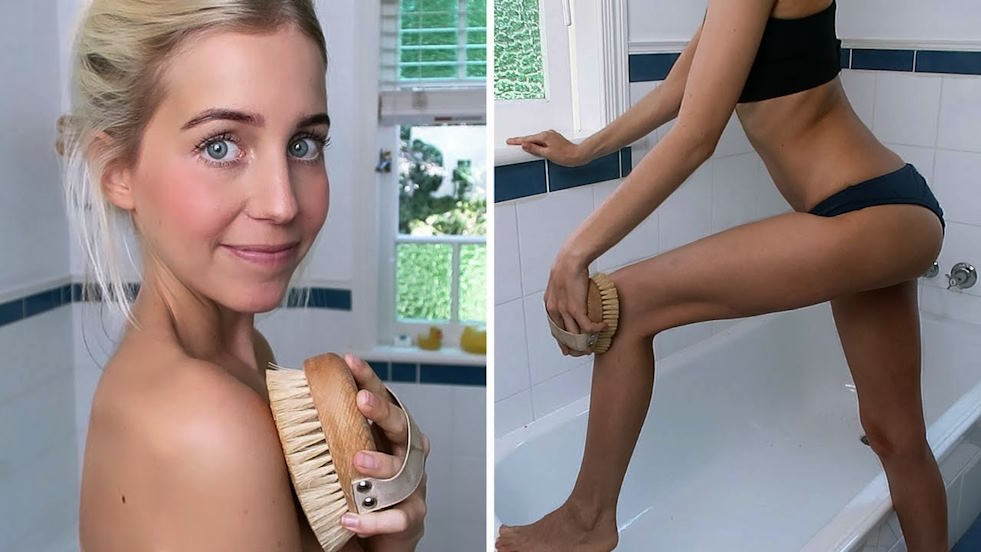The Benefits of Dry Brushing for Smooth Skin

Smooth, radiant skin is a desire shared by many, often leading individuals to explore various skincare routines and products. Amidst the plethora of options available, one ancient practice stands out for its simplicity and efficacy: dry brushing. Dating back centuries, dry brushing involves using a natural bristle brush to gently exfoliate the skin, promote circulation, and enhance overall skin health. While it may seem like a modern trend, the benefits of dry brushing have been extolled by cultures around the world for generations.
The Technique of Dry Brushing
Description of the Process
Dry brushing is a simple yet effective skincare technique that involves using a natural bristle brush to gently exfoliate the skin. Unlike wet exfoliation methods, dry brushing is performed on dry skin, typically before showering or bathing. The process entails brushing the skin in upward, circular motions, starting from the feet and working upwards towards the heart. This motion helps to stimulate circulation and lymphatic drainage, while also sloughing away dead skin cells, revealing smoother, more radiant skin beneath.
Tools Required for Dry Brushing
The key tool needed for dry brushing is a dry brush with natural bristles. These brushes are typically made from materials such as boar hair or plant fibers, which are gentle yet effective at exfoliating the skin. When selecting a brush, it’s important to choose one with a long handle to easily reach all areas of the body. Additionally, some individuals may prefer brushes with softer or firmer bristles depending on their skin type and sensitivity.

How to Properly Dry Brush
To properly dry brush, start by standing in a comfortable position, preferably in a dry area such as the bathroom. Begin brushing at the feet, using upward strokes towards the heart. Continue brushing each section of the body for several strokes, overlapping slightly to ensure thorough coverage. Pay special attention to areas with rough or dry skin, such as elbows, knees, and heels. Avoid brushing over any cuts, wounds, or irritated skin. After dry brushing, follow up with a shower or bath to rinse away any loosened skin cells and debris, then moisturize to lock in hydration and further enhance the skin’s radiance.
Benefits of Dry Brushing
Exfoliation
Dry brushing serves as a powerful exfoliation technique, effectively removing dead skin cells that accumulate on the skin’s surface over time. By sloughing away these cells, dry brushing reveals fresher, smoother skin underneath. Moreover, the process stimulates cell turnover, encouraging the body to produce new skin cells at a faster rate. This rejuvenating effect helps to maintain a youthful complexion and promotes overall skin health.
Reduction of Cellulite
Dry brushing is often touted for its potential to diminish the appearance of cellulite. By stimulating circulation and lymphatic drainage, dry brushing helps to break down fatty deposits beneath the skin’s surface. This targeted approach can lead to a reduction in the dimpled appearance associated with cellulite, while also smoothing out the skin’s texture for a more even complexion.

Tips for Effective Dry Brushing
Frequency and Duration of Sessions
To reap the benefits of dry brushing without overstimulating the skin, aim to dry brush your body 2-3 times per week. Each session should last around 5-10 minutes, depending on your skin’s sensitivity and tolerance. Avoid brushing too vigorously, as this can cause irritation and damage to the skin.
Areas of the Body to Focus On
While dry brushing can be performed on the entire body, certain areas may benefit from extra attention. Focus on areas prone to rough or dry skin, such as elbows, knees, and heels. Additionally, pay close attention to areas with poor circulation or lymphatic drainage, such as the thighs and buttocks, to maximize the detoxifying and cellulite-reducing effects of dry brushing.
Precautions and Contraindications
- Skin Conditions to Be Aware Of: Individuals with sensitive or irritated skin, eczema, psoriasis, or open wounds should exercise caution when dry brushing or avoid it altogether. Likewise, if you have a sunburn or any active skin infections, wait until your skin has fully healed before dry brushing.
- Proper Technique to Avoid Irritation: To minimize the risk of irritation, use gentle pressure and avoid brushing over areas of broken or inflamed skin. Always brush towards the heart in upward, circular motions, starting from the feet and working upwards. Use a brush with soft, natural bristles and avoid brushing too vigorously, especially on delicate areas like the face and neck. After dry brushing, be sure to moisturize your skin to replenish lost hydration and soothe any potential irritation.









